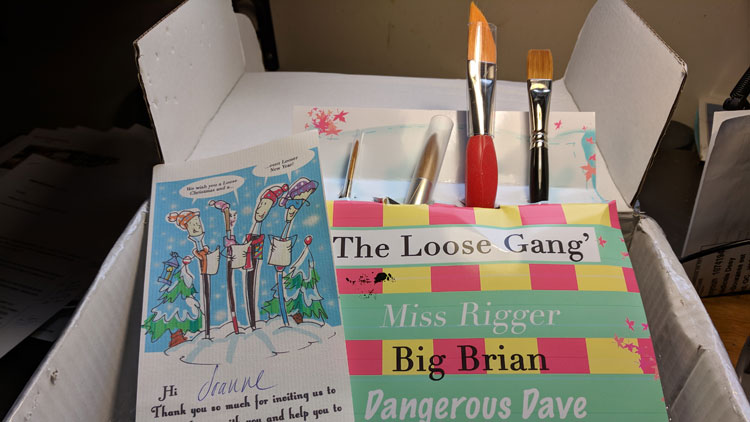
I write and talk a lot about the power and benefits of conversational copywriting.
Today I want to share an example of how the power of conversation extends way beyond just the words we write as copywriters.
Let me introduce you to Dangerous Dave, Big Brian, Flat Phil and Miss Rigger.
As you may have already noticed from the photo above, these are the names of four different paint brushes.
These four brushes arrived in the mail because my wife is an accomplished watercolor artist, but still likes to take classes. And one of the instructors she likes to follow is Andrew Geeson, from Wales. Andrew, as well as being an artist and instructor, clearly has smart marketing skills coded into his DNA.



